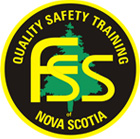Manual Lifting
Hazards Identified
Muscle strain, over-exertion
Hazard-Specific Personal Protective Equipment
Hazard-Specific Training
General awareness
Safe Work Practice
- Plan your move. Make sure pathway is clear.
- Use a dolly or other mechanical device if possible.
- Ask for help when required.
- Prepare for the lift; stretch and warm up before moving anything manually.
- Do not exceed your personal lifting capability.
- Only light objects should be lifted above shoulder height.
- Lift only to the level required.
- Split load when possible.
- Do not attempt to catch falling objects.
- When possible, push rather than pull.
- Stand close to object being lifted.
- Get a good grip on the object.
- Bend your knees; do not stoop.
- Lift using thigh, leg and abdominal muscles, but keep your back straight.
- When turning follow your feet – do not twist your body.
Regulations, Standards and References
